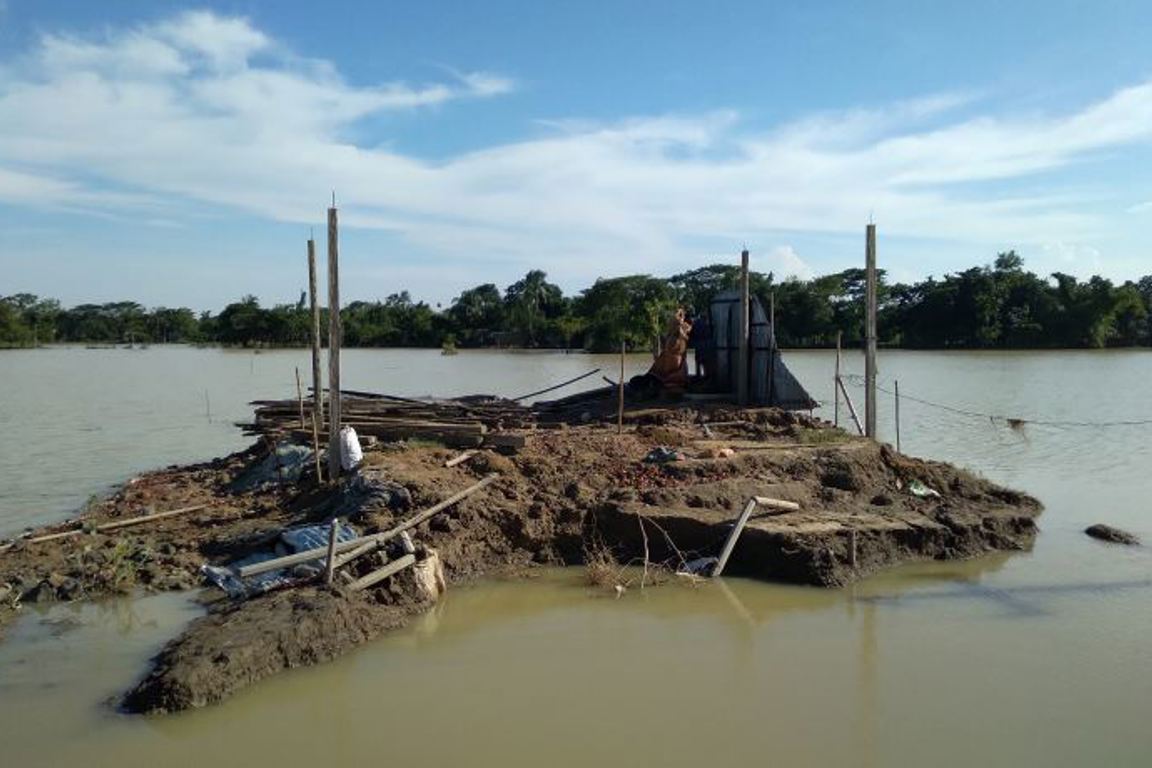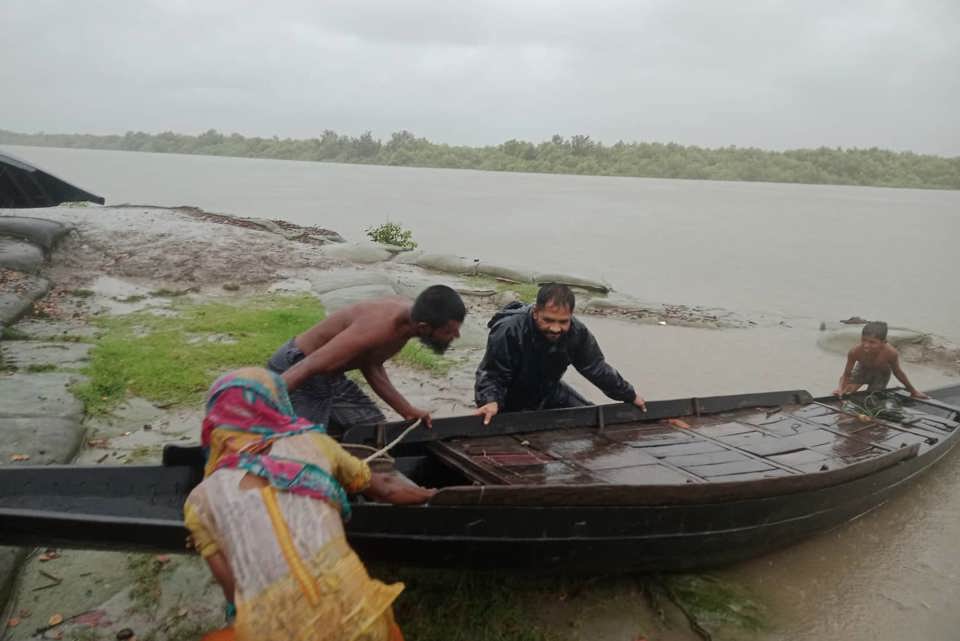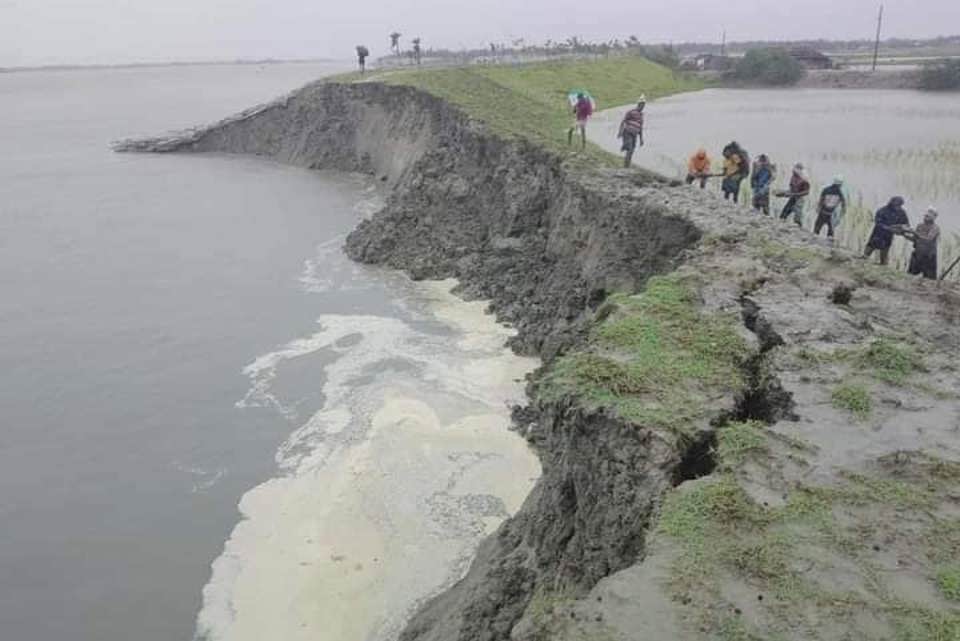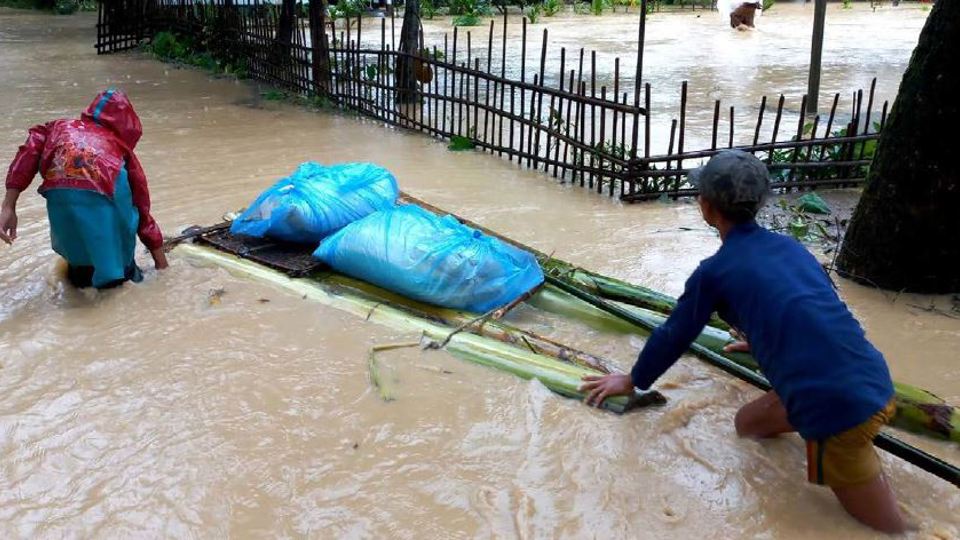Bangladesh Cyclone
in 2022, Cyclone Sitrang hit Bangladesh, displacing thousands and affecting millions across the country.

The aftermath of flooding in Bangladesh. Photo: Caritas Bangladesh
The Bangladesh cyclone appeal has now closed. Donations made to this appeal helped support immediate relief in the form of food, emergency shelter, access to safe water, hygiene support, and essential items.
You can still make a donation to our Emergency Response Appeal below to help communities that have been affected by disaster and conflict around the world.

People load into a raft to escape from Rising waters. Photo: Caritas Bangladesh
The impact of the Cyclone
The path of Cyclone Sitrang crossed right over Cox’s Bazaar, one of the largest refugee camps in the world, which is home to over one million Rohingya refugees, mostly living in unstable temporary shelters.
Cyclones, flooding, and natural disasters affect the lives of hundreds of thousands of Bangladeshi people.
Your donations helped support out partner Caritas Bangladesh on the ground in aiding affected communities.
Disaster risk reduction
Disaster risk reduction or DRR programs like the ones supported by Caritas Australia can mitigate the worst impacts of a crisis by effectively preparing and planning. In Bangladesh this meant evacuating thousands of people from the path of the cyclone to temporary shelters further inland, preparing food and water supplies and having WASH and medical facilities on standby for a surge.

A silt wall being reinforced to hold back rising waters during Cyclone Sitrang in southern Bangladesh. Photo: Caritas Bangladesh
Your donations supported our partners on the ground provide communities with:
Access to Clean Water
Emergency Shelter for Displaced Families
Hygiene and Sanitation Facilities
Food Rations for Flood-affected Families
The Climate Crisis in Bangladesh
The ongoing impact of the climate crisis means cyclones like Sitrang will become more frequent and more intense. Compounding disasters one after the other, with little time in between for proper recovery and preparation. This places an enormous strain on local communities that are already coping with the ongoing effects of the climate crisis and poverty.
Low-lying Bangladesh faces regular challenges from flooding and cyclones, which are increasing in regularity and severity. It is estimated that about 17 per cent of the people in Bangladesh will need to be moved in coming years if the impacts of a changing climate continue at the present rate.

Flood-affected families use rafts made from banana leaf to transport their relief supplies home. Photo: Caritas Bangladesh
Where does my donation go?
The funds raised through our Emergency Response Appeal will be used to provide immediate and longer-term humanitarian assistance to communities affected disasters and emergencies around the world.












